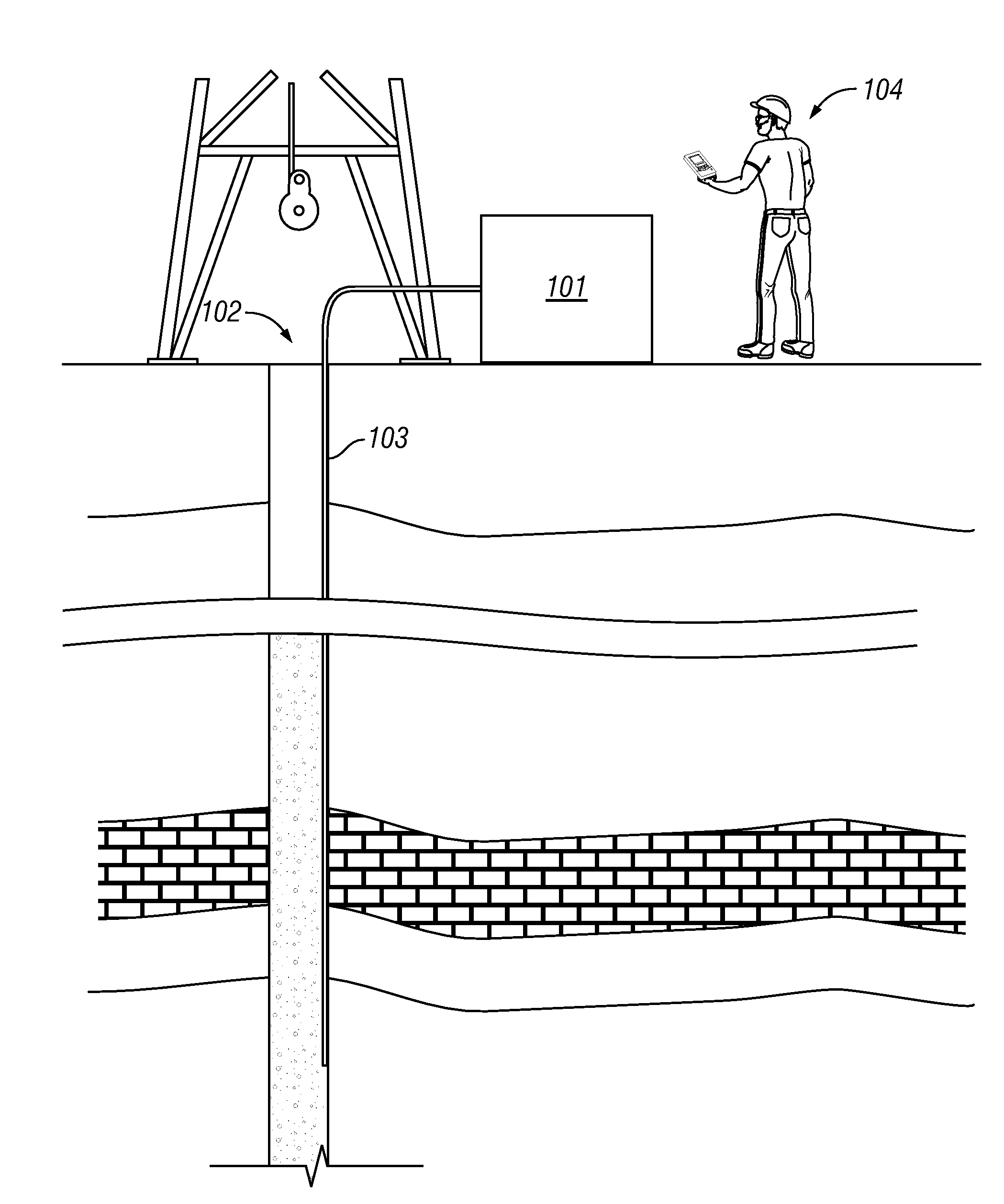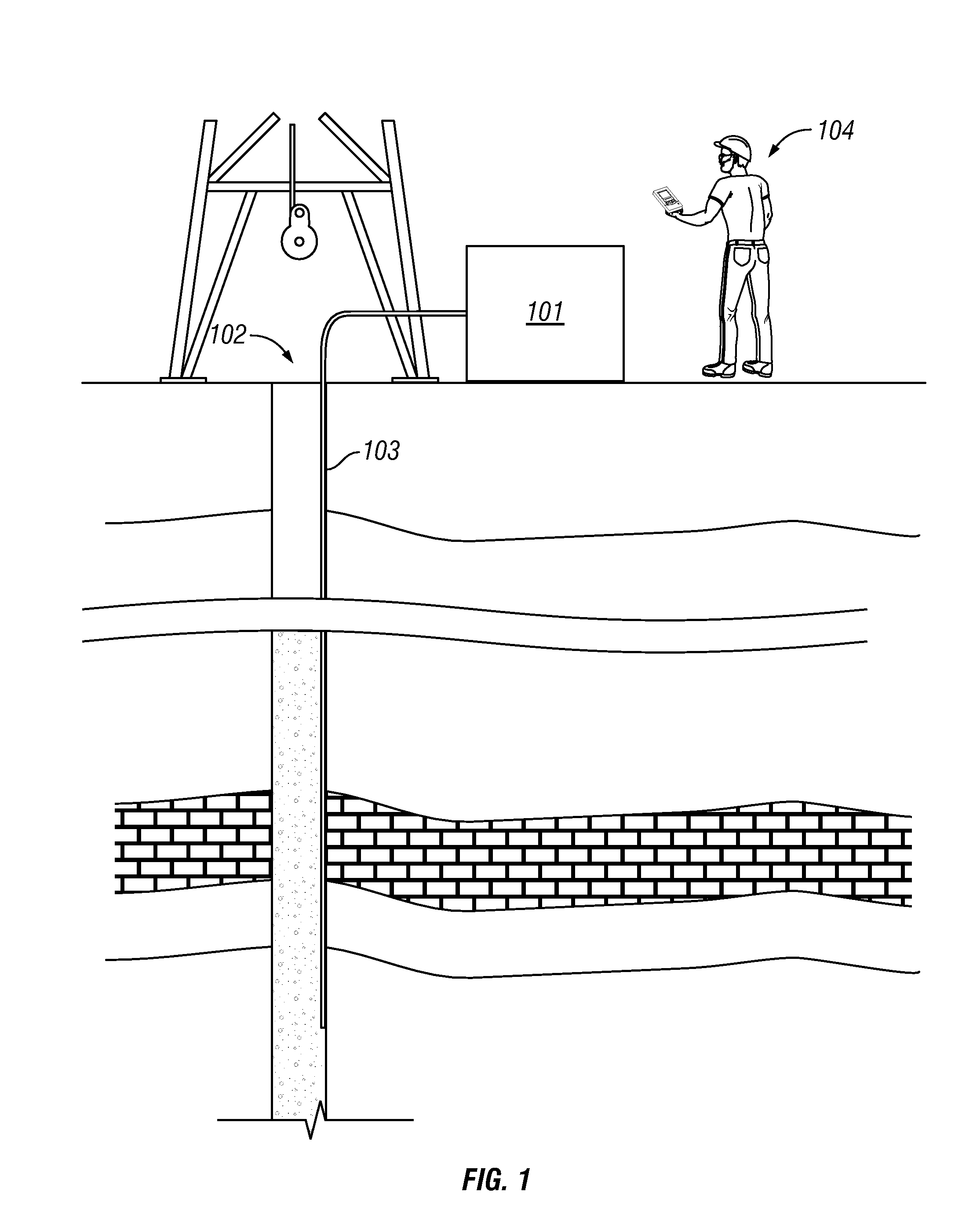Method for determining tracer concentration in oil and gas production fluids
a technology of oil and gas production fluid and tracer, which is applied in the direction of survey, borehole/well accessories, construction, etc., can solve the problems of increasing the cost of the operator of the well, affecting the detection efficiency of analyte, and affecting the production efficiency of oil and gas. achieve the effect of more efficient detection of analy
- Summary
- Abstract
- Description
- Claims
- Application Information
AI Technical Summary
Benefits of technology
Problems solved by technology
Method used
Image
Examples
example 1
[0075]A field application of the method of the present invention is performed in an oil and gas well. A first material (referred to in the art of hydraulic fracturing as a “stage” or, in this case, “the first stage”) is prepared for fracture injection into the well including 0.15 gallons per thousand gallons (gpt) buffer and 1 gpt of GBW23L* which is a high temperature oxidizing gel breaker, 40 pounds per thousand pounds (ppt) gelling agent, and a first fluorinated benzoic acid tracer; in water. A second stage is prepared which includes 1-to-2 lbs / gal proppant; 0.15 gpt buffer; 1 gpt of GBW23L; 1 gpt BC31* gel breaker activator which is a low temperature oxidizing breaker activator; 40 ppt gelling agent; a second fluorinated benzoic acid tracer; and 2.5 (ppt) gel stabilizer, in water. A third stage is prepared which includes 3 lbs / gal proppant; 40 ppt gelling agent; 0.20 gpt buffer; 1 gpt GBW23L; 1 gpt BC31; 1 ppt Ultra Perm* breaker which is a low temp oxidizing breaker; 1 ppt gel ...
example 2
[0079]An oil well having three production zones is completed using a separate sand screen for each producing zone. Each screen is treated with a tracer impregnated hydrophilic gel. 28 months after the completion, the operator notes that water production from the well has increased by 34 percent as compared to the period ending 30 days from the initial completion with a corresponding loss in hydrocarbon production. The production fluid is tested using a laminar flow portable device for the presence of the tracers. The portable device shows the presence of tracer from zone 2. The operator then plugs zone 2. Water production and hydrocarbon return to near completion levels within 72 hours.
example 3
[0080]Example 2 is repeated except that the samples from the test are returned to a laboratory where a quantitative analysis is done using a GC-Mass Spec. It is determined that tracer from Zone 3 is also present in the samples, but at a lower concentration than tracer from Zone 2, but at a greater concentration than tracer from Zone 1. The well operator establishes a new sampling schedule to increase surveillance of Zone 3 for water breakthrough.
PUM
 Login to View More
Login to View More Abstract
Description
Claims
Application Information
 Login to View More
Login to View More - R&D
- Intellectual Property
- Life Sciences
- Materials
- Tech Scout
- Unparalleled Data Quality
- Higher Quality Content
- 60% Fewer Hallucinations
Browse by: Latest US Patents, China's latest patents, Technical Efficacy Thesaurus, Application Domain, Technology Topic, Popular Technical Reports.
© 2025 PatSnap. All rights reserved.Legal|Privacy policy|Modern Slavery Act Transparency Statement|Sitemap|About US| Contact US: help@patsnap.com


